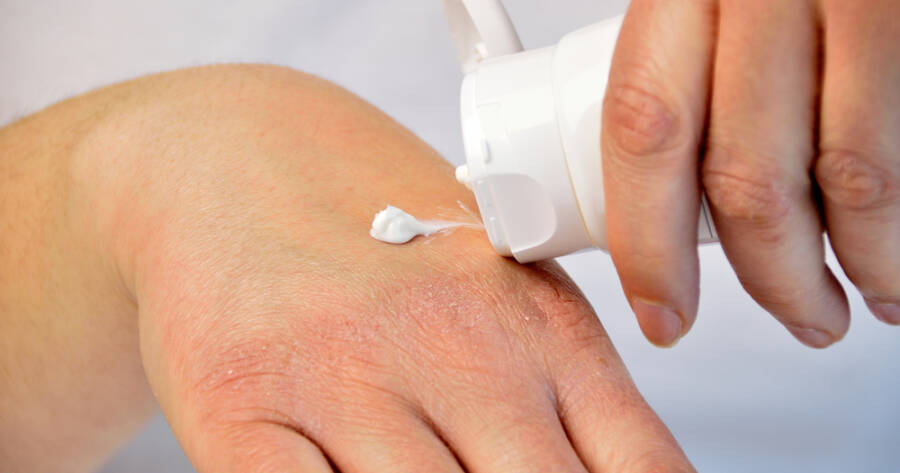Cold weather can trigger or worsen several chronic skin conditions, making winter a particularly challenging time for those affected. The combination of low humidity, indoor heating, and cold air tends to strip moisture from the skin, leading to irritation, dryness, and flare-ups. If you’re prone to certain chronic skin issues, taking extra precautions during the colder months could help prevent your symptoms from worsening.
1. Eczema (Atopic Dermatitis)
Eczema, a chronic skin condition marked by dry, itchy, and inflamed patches of skin, can become more severe during winter due to decreased humidity and colder temperatures. If you’re affected by eczema, consider applying a thick, fragrance-free moisturizer immediately after bathing to lock in moisture. Additionally, using a humidifier indoors may help maintain a more skin-friendly environment. Be cautious of wearing wool or synthetic materials, as they might irritate sensitive skin, and instead opt for breathable, soft fabrics like cotton.
2. Psoriasis
For individuals with psoriasis, winter’s dry air and low sunlight levels could worsen symptoms, as sunlight exposure often helps reduce the severity of psoriatic plaques. If you notice your psoriasis flaring up, consider moisturizing frequently and staying hydrated. Phototherapy is another option that may be effective if sunlight is limited in your area, but it’s best to consult your dermatologist before trying it. If you’re able, avoid long, hot showers, as they could strip your skin of natural oils and aggravate your psoriasis.
3. Rosacea
Rosacea, a condition that causes facial redness, visible blood vessels, and sometimes small, red, pus-filled bumps, can be aggravated by cold, dry air, and temperature fluctuations. Moving between heated indoor environments and the chilly outdoors can lead to flare-ups, as can drinking hot beverages or consuming spicy foods. To help manage rosacea in winter, consider applying a gentle, barrier-repair moisturizer daily, and shield your face with a scarf when heading outside. Reducing alcohol and caffeine intake could also help, as both tend to increase blood flow to the skin, potentially exacerbating rosacea.
4. Seborrheic Dermatitis
Seborrheic dermatitis, which causes flaky, greasy patches of skin often found on the scalp, face, or other oil-prone areas, can become more pronounced in colder weather. For those with this condition, changes in temperature and lower humidity levels can lead to more noticeable flaking and irritation. If you’re struggling with winter flare-ups, using medicated shampoos containing ingredients like ketoconazole, salicylic acid, or coal tar might be beneficial. Additionally, limiting your exposure to harsh cleansers and hot water may help prevent excessive dryness, which could worsen your symptoms.
5. Raynaud’s Disease-Associated Skin Symptoms
Although Raynaud’s Disease primarily affects blood flow to the fingers and toes, it can also cause skin changes like dryness, cracking, or even sores when circulation is impaired. If you have Raynaud’s, try to keep your extremities warm and protected from the cold. Moisturize your hands and feet frequently to prevent cracking, and avoid sudden temperature changes whenever possible. Choosing socks and gloves made from insulating materials could help, especially if you’re exposed to the cold for extended periods.
Taking Preventative Steps
If you find that your skin condition worsens in winter, consider building a proactive skincare routine early in the season. Regular moisturizing with a thick, fragrance-free lotion or cream can help, and using gentle cleansers could minimize dryness. Wearing protective clothing, limiting hot showers, and staying hydrated are also essential steps in winter skin care.
By keeping a close eye on your skin and adapting your routine to colder conditions, you may be able to keep these chronic skin issues under control, allowing for a more comfortable and manageable winter.
